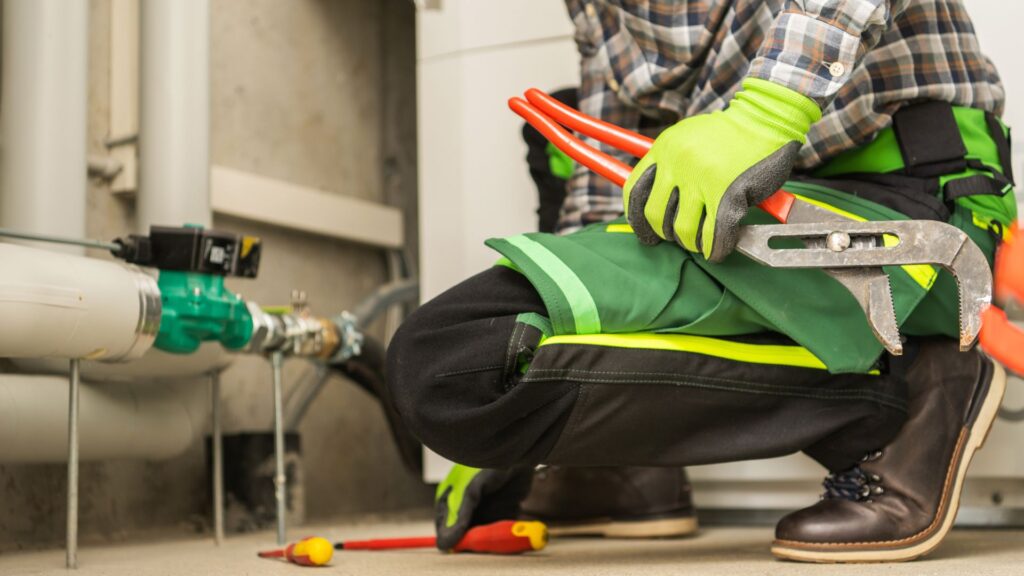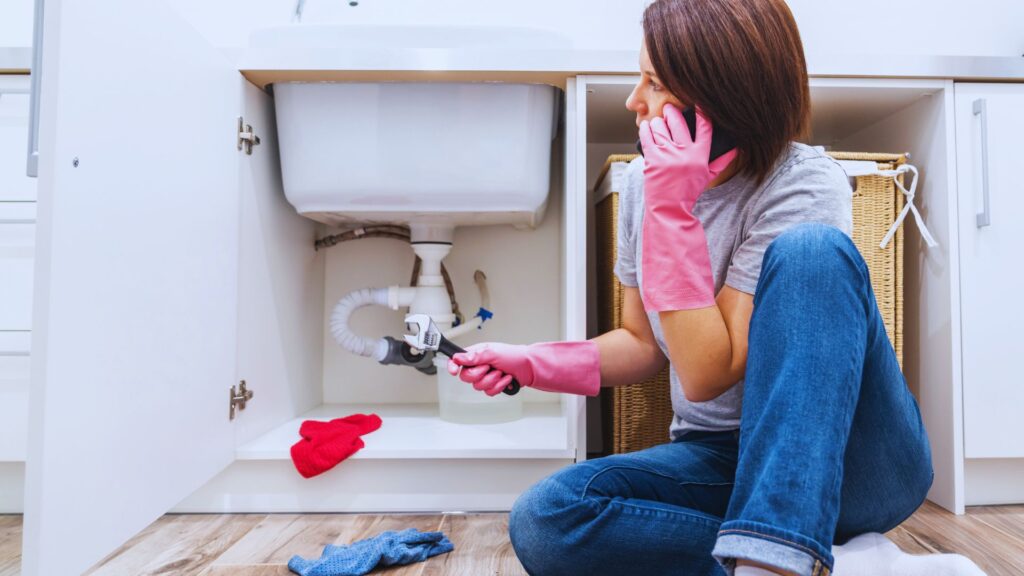Is it really possible that something as simple as backflow testing could protect your health and water supply? You might underestimate its significance, but regular assessments of backflow prevention devices are essential in safeguarding your drinking water from contamination. Without proper testing, you risk exposing yourself and your community to harmful pollutants. Understanding the underlying causes and consequences of backflow can illuminate why this process is not just a regulatory requirement but a critical health measure. What are the specific risks and preventive strategies you should know about?
Key Takeaways
- Backflow testing ensures the functionality of prevention devices, protecting drinking water from contamination and safeguarding public health.
- Regular testing helps identify potential issues in plumbing systems before they escalate, maintaining water safety.
- Compliance with local regulations typically mandates annual backflow testing to avoid fines and ensure community health.
- Contaminated water exposure can lead to severe health risks, including gastrointestinal illnesses and chronic conditions, especially for vulnerable populations.
- Hiring certified professionals for backflow testing ensures accurate results and adherence to local health regulations.
What Is Backflow Testing?
Backflow testing is an essential procedure that guarantees safe drinking water by preventing contaminants from flowing back into the potable water supply. It involves evaluating your plumbing system to verify that backflow prevention devices are functioning correctly.
These devices are significant in protecting your water supply from pollutants and securing public health. Without regular testing, you risk compromising the quality of your water, which can affect not just your household but also the broader community.
The testing frequency for backflow prevention devices is typically mandated by local regulations. Most jurisdictions require annual testing, but some may have different intervals based on specific conditions or device types.
It’s important to stay informed about these requirements to maintain compliance and safeguard the safety of your water supply. By adhering to the recommended testing schedule, you help protect not only your health but also the health of your neighbors.
When you engage in backflow testing service, you’re actively participating in a significant community effort. It’s about more than just meeting standards; it’s about creating a safe environment for everyone.
Regular inspections allow you to identify potential issues before they escalate, thereby preserving the integrity of your water system. Remember, the responsibility of backflow prevention falls on all of us.
Causes of Backflow
Understanding the causes of backflow is essential for maintaining a safe water supply. Backflow occurs when water flows in the opposite direction than intended, potentially leading to contamination. Recognizing the reasons behind this issue can help you implement effective backflow prevention measures and safeguard your water quality.
- Sudden pressure changes in the water supply
- Cross-connections between potable and non-potable water systems
- Negative pressure or vacuum conditions in the plumbing system
One of the primary causes of backflow is a sudden drop in water pressure. This can happen due to a burst pipe or heavy water demand elsewhere in the system. When pressure decreases, it can create a vacuum that pulls contaminated water into the clean supply.
Another significant factor is the presence of cross-connections. These occur when there’s a direct link between potable water and a source of contamination, such as irrigation systems or industrial processes. Without proper backflow prevention devices in place, contaminants can easily mix with your water supply.
Lastly, negative pressure or vacuum conditions can arise from various situations, including firefighting efforts or rapid water usage. When these conditions occur, they can lead to back siphonage, where harmful substances are drawn back into the water supply.

Health Risks of Contaminated Water
Contaminated water can originate from various sources, including agricultural runoff and faulty plumbing systems.
Exposure to such water poses significant health risks, ranging from gastrointestinal illnesses to more severe conditions like neurological disorders.
It’s vital to implement preventive measures to safeguard your health and guarantee clean water access.
Sources of Contamination
Water supply systems can easily become compromised by various sources of contamination, posing significant health risks. Understanding these contamination sources is essential in safeguarding your water supply and guaranteeing your health.
- Agricultural runoff: Pesticides and fertilizers can seep into groundwater, introducing potential pollutants.
- Sewage leaks: Broken pipes or overflows can lead to harmful bacteria entering the water supply.
- Industrial discharges: Factories may release chemicals that contaminate local water sources.
These potential pollutants can originate from both natural and man-made activities. For example, stormwater can wash contaminants from urban areas into nearby water bodies.
Similarly, improper disposal of household chemicals can lead to toxic substances infiltrating the ground.
Recognizing these contamination sources is the first step in protecting your water supply. By being aware of the risks and advocating for regular backflow testing, you not only help guarantee the safety of your water but also contribute to a healthier community.
Health Effects Explained
The presence of contaminants in your water supply poses serious health risks that can affect you and your family. Contaminated water can carry harmful microorganisms, leading to waterborne diseases like cholera, giardiasis, and hepatitis A. These diseases can result in severe gastrointestinal issues, dehydration, and, in some cases, even death.
The impact on public health is profound, as outbreaks can spread rapidly within communities, particularly affecting vulnerable populations such as children and the elderly.
When you consume contaminated water, your body’s defenses may be overwhelmed, leading to long-term health complications. Beyond immediate symptoms, exposure to certain contaminants can also contribute to chronic conditions, including developmental disorders and weakened immune systems.
It’s essential to recognize that the safety of your water supply is intertwined with the well-being of your community. By understanding these health effects, you can appreciate the importance of regular backflow testing to prevent contamination.
Protecting your water isn’t just about safeguarding your family; it’s a vital step in ensuring everyone in your community has access to safe, clean water. Your proactive measures can help mitigate these health risks and promote a healthier environment for all.
Preventive Measures Needed
To effectively reduce the health risks associated with contaminated water, implementing preventive measures is fundamental. By focusing on proactive strategies, you can guarantee the safety of your water supply and enhance overall water quality.
- Regular backflow testing to detect potential contamination sources.
- Routine inspection and maintenance of plumbing systems.
- Installation of backflow prevention devices to safeguard against reverse flow.
Preventive maintenance is essential in identifying issues before they escalate, protecting not just your health but also that of your community. When you prioritize regular testing and maintenance, you minimize the risk of harmful contaminants entering your water supply.
Additionally, education and awareness play a significant role. Understanding the importance of clean water and the potential health risks posed by contamination empowers you to take action.
By fostering a culture of preventive measures, you create a safer environment for you and your loved ones. Remember, safeguarding your water quality is a shared responsibility, and your commitment to these practices can lead to healthier outcomes for everyone.
Importance of Regular Testing
While neglecting regular backflow testing may seem harmless, it can lead to significant health risks and costly repairs. Confirming your water supply remains uncontaminated is vital for your well-being and that of your community.
Regular testing helps detect potential cross-connections that could allow harmful substances to enter your potable water system.
The testing frequency is typically mandated by local regulations, often requiring annual assessments, but you should consult your local guidelines for specifics. Adhering to these requirements not only safeguards your health but also reinforces your commitment to maintaining a safe environment for your family and neighbors.
You might wonder about the testing methods involved. Backflow testing generally involves a certified technician using specialized equipment to assess the functionality of backflow prevention devices.
This confirms that these devices are effectively blocking any reverse flow that could introduce contaminants into your water supply. Regular checks can identify issues before they escalate into serious problems, allowing for prompt repairs that save you money in the long run.
Backflow Prevention Devices
Backflow prevention devices play an indispensable role in safeguarding your water supply from contamination. These devices guarantee that water flows in one direction, preventing any backflow from potentially hazardous sources. By using these devices, you’re taking a significant step in maintaining the integrity of your drinking water.
Here are a few key advantages of backflow prevention devices:
- Protection from Contaminants: They stop toxic substances from entering your water supply.
- Regulatory Compliance: Installing these devices can help you meet local health regulations.
- Peace of Mind: Knowing your water is safe boosts your confidence in your home’s water quality.
To effectively protect your water supply, proper device maintenance is vital. Regular checks and testing can identify any issues before they become significant problems.
You should inspect the device for any signs of wear or damage and verify that it’s functioning correctly. This proactive approach not only prolongs the life of the device but also guarantees peak performance.
If you’re unsure about how to maintain your backflow prevention device, consider hiring a professional. They can provide the expertise needed to keep your system in top shape.
Legal Requirements and Regulations
Guaranteeing compliance with legal requirements and regulations regarding backflow prevention is fundamental for homeowners and businesses alike. These legal frameworks are designed to protect your water supply from contamination, guaranteeing that it remains safe for consumption. Understanding these regulatory standards is essential for anyone responsible for maintaining a property.
Most jurisdictions require specific backflow prevention devices to be installed, particularly in areas where the risk of contamination is higher. Regular backflow testing is often mandated by law to verify that these devices function correctly. Failure to comply with these regulations can result in significant fines, legal repercussions, and, most importantly, jeopardize public health.
You’ll find that legal compliance not only safeguards your property but also fosters a sense of community responsibility. By adhering to these rules, you contribute to the overall safety of your neighborhood’s water supply. Local health departments and water authorities typically oversee these regulations, and they can provide you with the necessary guidelines for compliance.
It’s also important to keep records of your backflow testing and maintenance activities, as many municipalities require documentation to demonstrate compliance. Regularly scheduled inspections and prompt repairs guarantee that your system remains up to code and minimizes the risk of backflow incidents.
Tips for Homeowners
To guarantee your home’s water supply remains safe, schedule regular backflow testing.
Familiarize yourself with local regulations, as they can vary considerably and impact your responsibilities.
Finally, always hire certified professionals to perform the testing to assure compliance and accuracy.
Schedule Regular Testing
Regular backflow testing is crucial for maintaining the safety and integrity of your home’s water supply. To guarantee your system remains compliant and safe, it’s important to establish a routine. Here are some tips to help you schedule regular testing:
- Set schedule reminders in your calendar for annual tests.
- Consult with a certified backflow tester to determine the appropriate testing frequency based on your specific system and local regulations.
- Keep records of all tests and maintenance for future reference.
By scheduling regular testing, you not only protect your home but also foster a sense of community responsibility. Consistent testing helps identify potential issues before they escalate, assuring your family enjoys clean and safe water.
Being proactive about backflow prevention demonstrates your commitment to both your health and your neighborhood’s well-being.
Don’t forget to communicate with neighbors about their testing schedules, too. Sharing information can create a supportive network, allowing everyone to stay informed and engaged.
Know Local Regulations
Understanding local regulations regarding backflow prevention is vital for homeowners who want to protect their water supply. Familiarizing yourself with local guidelines guarantees you comply with municipal standards, which can vary notably from one area to another. This knowledge not only safeguards your water but also helps you avoid potential fines or legal issues.
Start by contacting your local water authority or visiting their website to access the specific rules that apply to your area. Many municipalities require regular backflow testing and maintenance, and understanding these requirements can help you stay ahead.
It’s important to know how often you need to conduct tests and whether there are specific devices mandated for your property.
Additionally, keep an eye on any changes to regulations, as local governments often update their standards to enhance public safety. Engaging in community discussions or attending local meetings can also provide insights into upcoming changes.
Hire Certified Professionals
Hiring certified professionals for backflow testing is essential to guarantee the integrity of your water supply. By choosing experts who meet specific certification requirements, you ascertain that your testing is both reliable and compliant with local regulations.
Here’s why you should hire certified professionals:
- Expert Knowledge: They possess an in-depth understanding of backflow prevention systems and their complexities.
- Safety Assurance: Professionals apply their skills to detect issues that could jeopardize your health.
- Regulatory Compliance: Certified technicians know the local laws and ascertain your system adheres to them.
When you hire someone with the right professional expertise, you’re not just getting a service; you’re investing in peace of mind.
Certified professionals follow industry standards and are trained to handle various backflow devices, making them more effective than untrained individuals. They can quickly identify potential hazards and implement solutions, protecting both your water supply and your family’s health.
Always verify their credentials and experience to ascertain you’re making a wise choice. Remember, the health of your water supply is too important to leave in the hands of amateurs.
In summary, backflow testing is essential for maintaining a safe water supply and protecting public health. Just as knights of old safeguarded their territories, you too must guarantee your drinking water remains uncontaminated. Regular testing not only complies with regulations but also prevents potential health risks linked to polluted water. By choosing Pipe It Up for your backflow testing, investing in backflow prevention devices, and scheduling annual assessments, you’re taking a proactive step toward a healthier community and a cleaner future.



